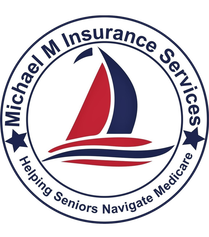Your Local West Babylon, NY Medicare Agent Has The Answers You Need
Get expert Medicare guidance in West Babylon, NY! Your local Agent answers questions, compares plans, and helps you make informed choices.
West Babylon, NY Residents: What is the Medicare Program?


Close the Medicare Gaps In Coverage With A Medicare Supplement Plan With Your West Babylon, NY Medicare Agent
While Medicare pays for many medical costs, it does not cover everything. Medicare Supplement plans) help bridge the gaps in coverage. Medigap policies are designed to cover the deductibles, co-payments, and other out-of-pocket expenses that traditional Medicare does not cover. While every Medigap policy must provide basic benefits of Medicare Part A and B, there are some differences in terms of cost-sharing and benefits. For instance, Plan F provides the most comprehensive coverage, including a foreign travel emergency; however, it is also the most expensive. With each successive plan, the premium decreases and the members’ cost share increases. Contact your West Babylon, NY Agent to find the Medicare Supplement Plan for your needs.
Your Local West Babylon, NY Medicare Agent Has Medicare Advantage Plans

Find Prescription Drug Coverage In West Babylon, NY Through Your Local Agent
The cost of medications can take a significant toll on your finances, especially when you’re on a fixed income. This is where Medicare Part D comes in. Medicare Part D is a stand alone Insurance Plan offered by Private Companies to go with Original Medicare(Part A and B). Part D provides a wide range of prescription drug coverage, from brand name drugs to generic drugs. It also covers some vaccines and medical supplies, such as syringes and test strips. Medication costs are determined by Tier Level and range from Generics to Specialty. Your mix of Medications will determine the most appropriate Part D Plan for you. Your Local West Babylon, NY Medicare Agent can advise you on how to find the right one.

Why Utilizing A Local West Babylon, NY Medicare Agent Is A Good Idea .
A Medicare Agent, also known as a Medicare agent or advisor, is a licensed professional who helps individuals navigate the complex world of Medicare. They can provide guidance on Medicare Part A, Part B, Part C Medicare Advantage Plans, Part D prescription Drug Plans and Medicare Supplement(Medigap Plan). A Medicare Agent can help you identify the most appropriate coverage options for your specific healthcare needs and budget. Your Local Medicare Agent lives in your area, is Licensed in your State, is Certified with Medicare, is appointed with Multiple Insurance Companies and is available 7 days a week for consultation.
2025 Medicare brochure

